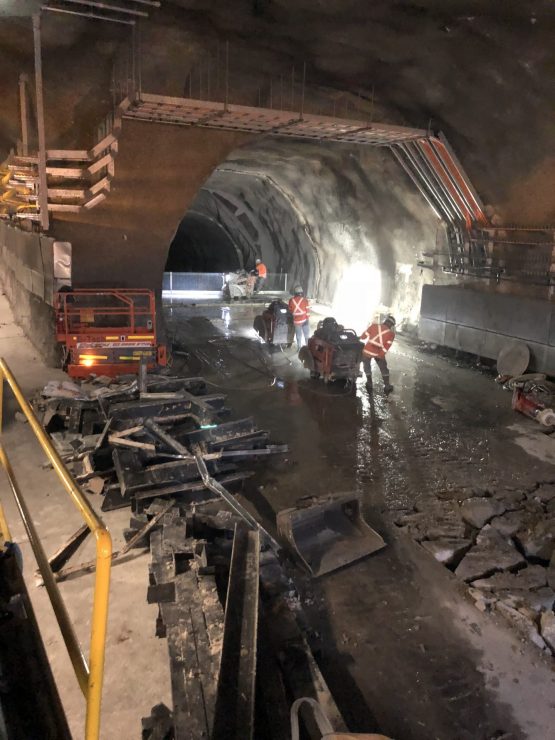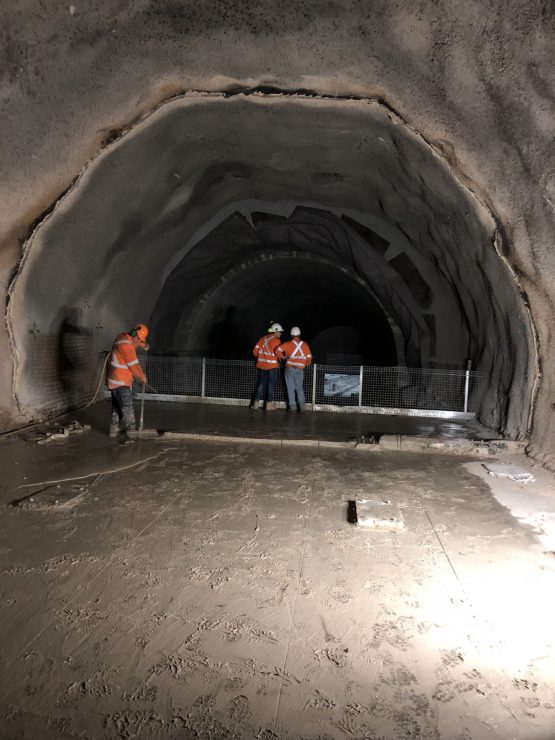How to Get a Start in the Tunnelling Sector?
- magda

by Daniel Green
Sydney’s next flagship infrastructure project is the Western Harbour Tunnel. Linking the as-yet-unfinished Rozelle Interchange via the not-yet-begun Warringah Freeway Upgrade, this six-lane, 6.5km behemoth aims to move a hundred thousand cars a day. NSW Transport Minister Andrew Constance has confirmed that the underground freeway will employ FIFTEEN THOUSAND workers across its four-year lifespan.
The SMH claims both tunnels will be ‘built in a trench on the harbour floor. Besides that, large pre-fab concrete tubes lowered into place from barges above’. The underwater phase seems less like tunneling and more like oversized plumbing. However, there are still miles and miles of actual tunneling on land. And while this trench/pre-fab/barge method raises more questions than it answers, one inquiry remains on everyone’s lips: where do I sign?
With the exorbitant pay and all the allowances, heck, even I might park the keyboard and get back on an excavator. If only the answer were that simple. Getting your foot in the hoarding of a tier-one infrastructure project isn’t easy. Competition is fierce with hundreds of workers vying for the same position. Even if that position is as simple as general labouring. However, with the right dedication and a few choice tactics, you may just Get It Done.
1. Have A Thorough Understanding About Tunneling
Taking a moment to really think about what it takes to construct a tunnel will allow you to apply a bit of strategy to this career change. Almost all trades are involved in the greater project in some way or for some period. For example, chippies may be required to build/maintain site amenities, sparkies will need to power those amenities, and plumbers need to plumb them. However, all the sparkies probably won’t be needed until the tunnel is built and the electrical fit-out is underway. Other workers, however, may be needed for the entire project. Forklift/telehandler operators to run things around the site, general labourers to gopher, and of course tunnellers, shotcrete, and steel fixers. Knowing which positions need to be filled and when will help you choose which companies to apply to, otherwise, you will waste hours making dead-end phone calls.
2. Research The Project
The sheer amount of information you can find on Google is mind-boggling. With enough perseverance, you can excavate down into the foundations of the project you’re gunning for. Companies like to promote their wins online website, so a combination of smart internet searches and a few basic phone calls can yield lots of information. For example: when the project will break ground, who the primary contractor is, who their subbies are and what works have been awarded to whom. From there you can make some assumptions that will save you from calling every contractor between here and Alice.
In about seventeen seconds of Google searching, I found this document outlining opportunities for Australian businesses on the Western Harbour Tunnel.
www.industry.gov.au/sites/default/files/aip/tfnsw_western_harbour_tunnel_project_summary.pdf
As a construction worker, it may not look like it will help. But soon I learnt that Package 1 is the WHT Southern Tunnel Works and Package 2 is the WHT Driven tunnels, IMT [IMmersed tube Tunnel], and Electrical & Mechanical Fitout. If I’m a mechanical fitter then I don’t really need to start getting too excited until the end of this year. The document also tells me that TfNSW will announce the Package 2 Contractor late in the 4th Quarter of this year, so probably in December. At the bottom of page 1 in a small font are these links – they will have more clues of their own:
www.planningportal.nsw.gov.au/major-projects/project/10451
3. Be Who They Need
It sounds obvious but the neurosurgeons scrolling this article need not apply. TIG welders and cabinet makers are likely the same. If you’re a career avionics specialist trying to get work as an industrial electrician [it’s all just wires, right??] then your CV will be dismissed from the get-go. If however, you are a TBM fitter or a jumbo operator then chances are you’ll be put at the top of the list. Also, if you fall into a demographic that the industry is trying to expand then you could be a valuable commodity to the project before even setting foot on site.
4. Have a Killer CV
Your resume is your best you but on paper. It opens doors, parts seas, and makes HR teams excitable! At least it should. A winning CV will show potential employers that you are the right person for the job by illustrating that you have the exact skills, tickets, and experience they are looking for. Does that mean you should tailor your CV for every role you go for? Yes. Will that take infinitely more work? Yes. Will all that work be worth it? Definitely. Here’s some more information on how to make your CV stay at the top of the pile.
5. Contact The Primary Contractor
After you’ve Googled your fingers to the bone, call the primary contractor. They may be able to provide further information about their preferred subcontractors and suppliers. Who knows, they may even be hiring themselves! In the case of the WHT, the latest information I could find on who won the works were either Bechtel, Laing O’Rourke, or Harbour West Partners, a consortium comprising Macquarie Capital, Jacobs, and RPS. No point in calling Macquarie though, they are just the money.


6. Talk To The Boys
For hundreds of years, the smoko hut has been the source of all information, true and untrue. Chatting to your co-workers over a coffee is a good way to find out the latest information. Good news travels fast.
7. Register With Labour Hire
Often, infrastructure labour shortages are filled with labour for hire. These are usually less skilled trades like labouring but it’s certainly a foot in the door. Registering with a good labour hire provider that has a strong reputation for worker wellness, great pay, and access to the tunnels is a wise choice. We know of one right here.
8. Be Relentless
One thing is for certain – work works. Putting in the hard yards to secure yourself a job in the tunneling sector is an exponentially more achievable goal when quitting is off the table. Rejection and dead ends are tough but if you get back just one more time then you fall down then eventually you’ll get what you want.
Go Get It Done!












